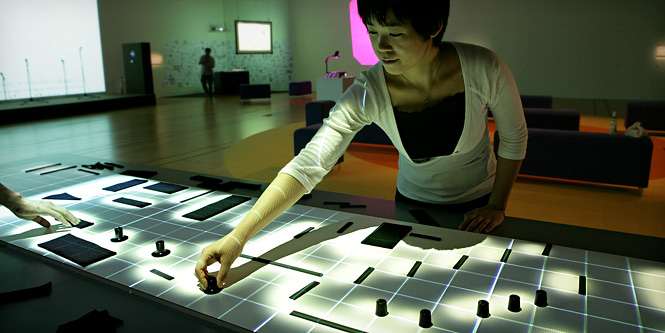
Golan Levin
Golan Levin is an artist, origins from New York, US and was born in 1972. He is also a composer, performer and engineer that interested in developing artifacts and events which explore supple new modes of reactive expression.
He received a bachelor degree in Art and Design at the Massachusetts Institute of Technology in 1994, and a Master's degree in Media Arts and Sciences from the MIT Media Lab in 2000. Levin received undergraduate and graduate degrees from the MIT Media Laboratory, studied in Aesthetics and Computation Group. He has worked for 4 years an an interactive designer and research scientist at Interval Research Corporation. After graduate at MIT, Levin also starts to teach in Columbia University, Cooper Union, and Parsons School of Design, before he finally accepting a position at Carnegie Mellon University in 2004.
Levin's work combines equal measures of the whimsical, the provocative, and the sublime in a wide variety of online, installation and performance media. There are quite lists of projects and works done by him so far, like:
Dialtones: A Telesymphony [2001]
The Secret Lives of Numbers [2002]
The Dumpster [2006]
Audiovisual Environment Suite [2000]
Scribble [2000].
MARK [2002]
Messa di Voce [2003]
The Manual Input Sessions [2004]
Scrapple [2005]
Ursonography [2005]
Opto-Isolator [2007]
Double-Taker (Snout) [2008]
Interactive Installation Art
Scrapple (2005)
Info from his website:
Scrapple is an audiovisual installation in which everyday objects placed on a table are interpreted as sound-producing marks in an “active score.” The Scrapple system scans a table surface as if it were a kind of music notation, producing music in real-time from any objects lying there. The installation makes use of a variety of playful forms; in particular, long flexible curves allow for the creation of variable melodies, while an assemblage of cloth shapes, small objects and wind-up toys yields ever-changing rhythms. Video projections on the Scrapple table transform the surface into a simple augmented reality, in which the objects placed by users are elaborated through luminous and explanatory graphics. The 3-meter long table produces a 4-second audio loop, allowing participants to experiment freely with tangible, interactive audiovisual composition. In the Scrapple installation, the table is the score. The Scrapple was collaborated with Ars Electronica Futurelab.
After seeing this installation art, I found out that it is kind of interesting to create beautiful sound effects by just placing something on the top of the thing. In this case, Scrapple is kind of like a piano, but with no attached keys. Instead, we make the keys to produce the notes, according to the objects physical and the location or position of where we put the objects.
Since Levin also a composer, it is not a surprised that if he can create a new music equipment by using the same technology as Scrapple.
http://www.flong.com/projects/scrapple/

No comments:
Post a Comment